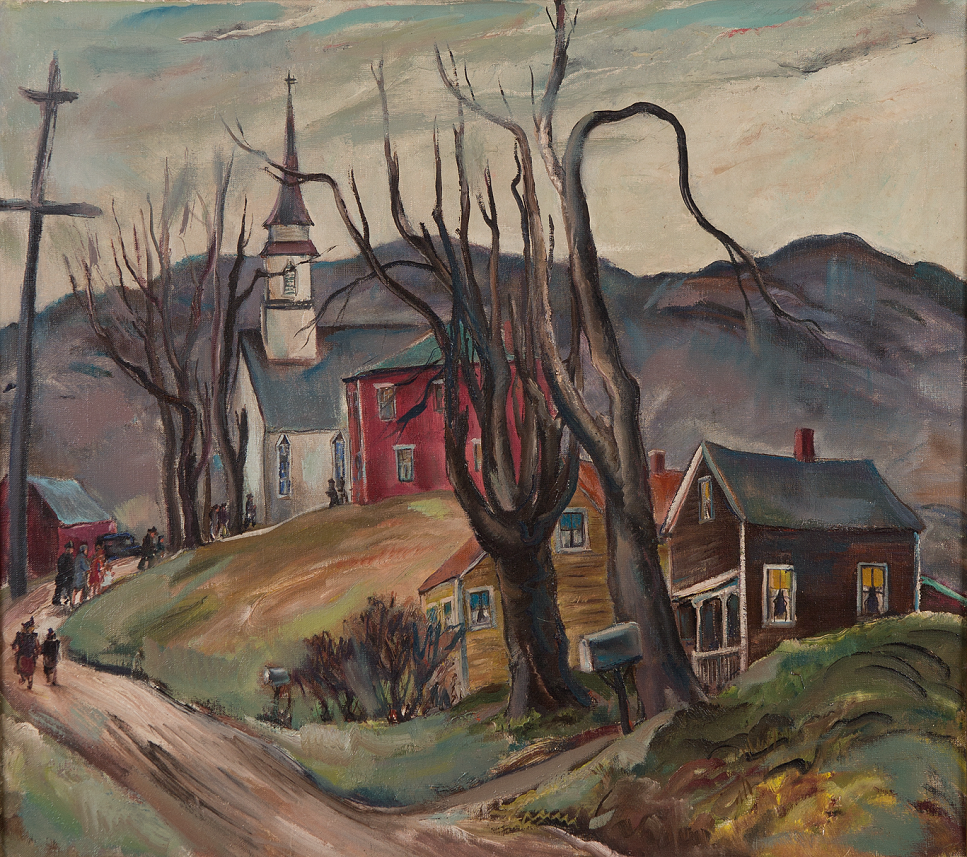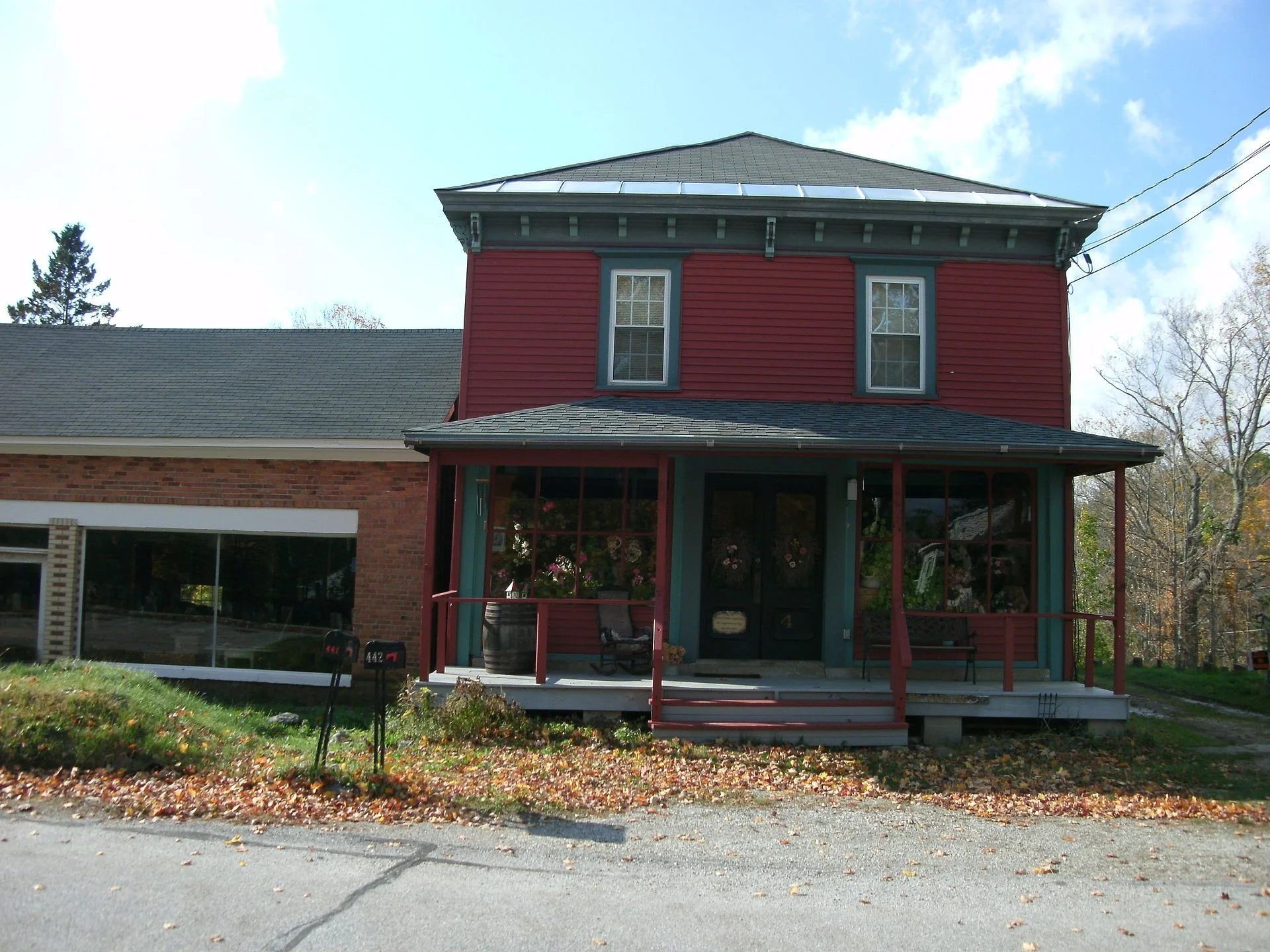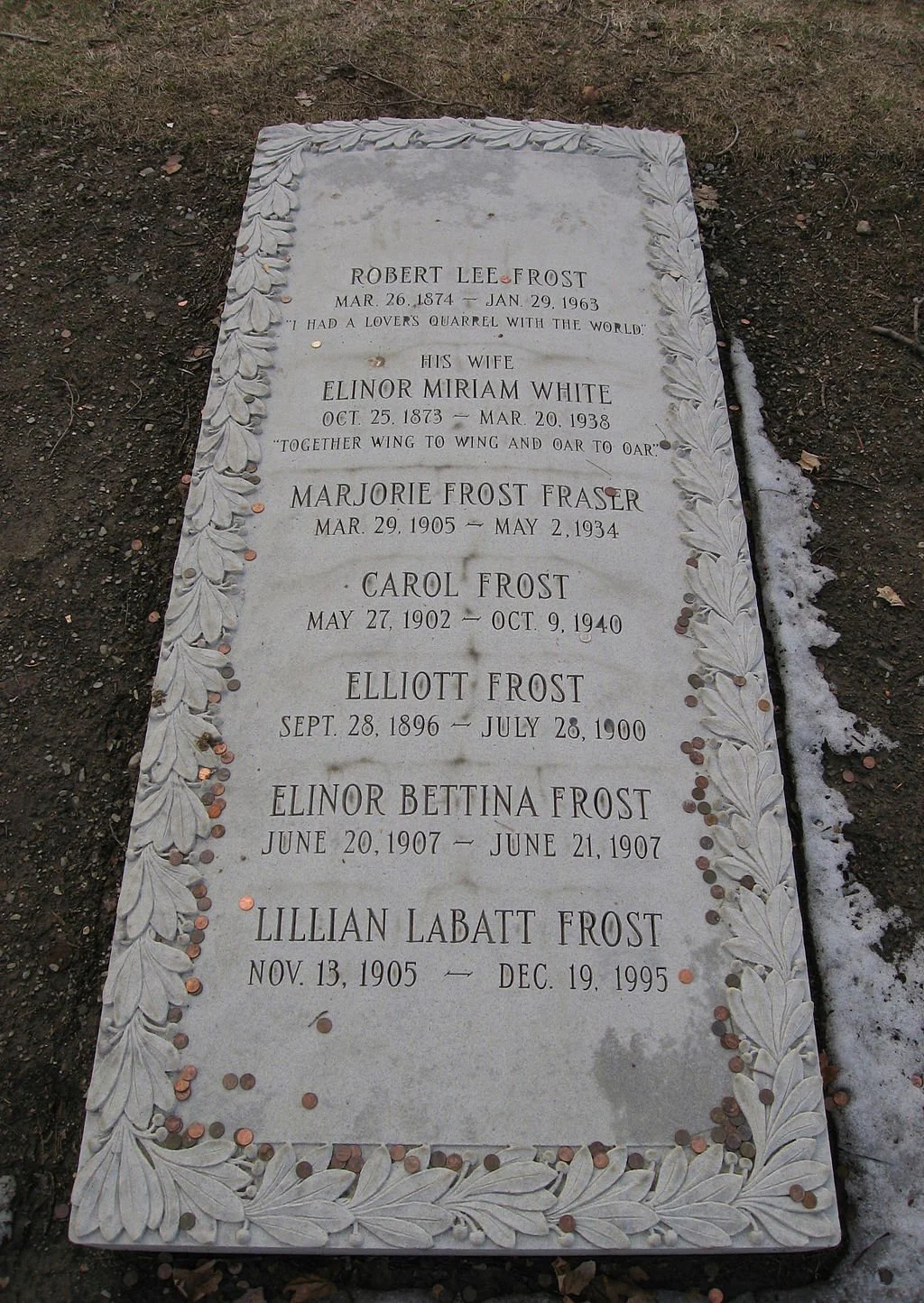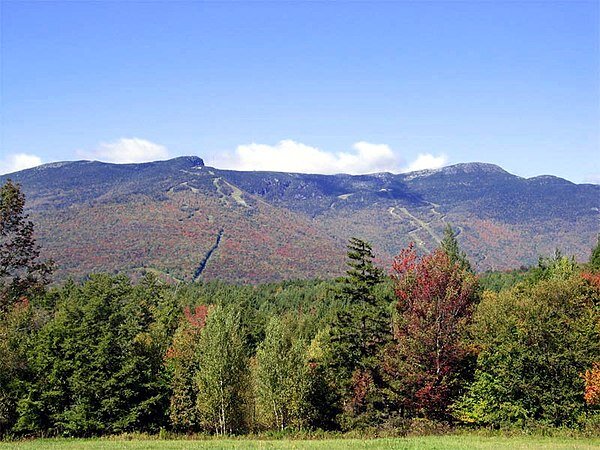
Picturing Pownal
“Sunday, 1937 ” (oil on canvas), by Marion Huse, in the show “Marion Huse: Picturing Pownal’’, at the Bennington (Vt.) Museum through June 22.
The museum says:
“Huse’s work spanned forty years and a variety of styles and subject matter, from Regionalism in the 1930s to a more Expressionistic style that she developed in the post-war years. A selection of her prints, depicting historic local landmarks and covered bridges, will be shown alongside her paintings.’’
Former Country Store in Pownal, Vt.
— Photo Doug Kerr
The end of his quarrel and road
Robert Frost’s grave, in Bennington, Vt.
— Photo by Nheyob
One of the most famous — and misunderstood — poems in the English Language, first published in 1915
Two roads diverged in a yellow wood,
And sorry I could not travel both
And be one traveler, long I stood
And looked down one as far as I could
To where it bent in the undergrowth;
Then took the other, as just as fair,
And having perhaps the better claim,
Because it was grassy and wanted wear;
Though as for that the passing there
Had worn them really about the same,
And both that morning equally lay
In leaves no step had trodden black.
Oh, I kept the first for another day!
Yet knowing how way leads on to way,
I doubted if I should ever come back.
I shall be telling this with a sigh
Somewhere ages and ages hence:
Two roads diverged in a wood, and I—
I took the one less traveled by,
And that has made all the difference.
— “The Road Not Taken,’’ by Robert Frost
In The Paris Review critic, poet and essayist David Orr described some of the misunderstanding this way:
“The poem’s speaker tells us he ‘shall be telling,’ at some point in the future, of how he took the road less traveled…yet he has already admitted that the two paths ‘equally lay / In leaves’ and ‘the passing there / Had worn them really about the same.’ So the road he will later call less traveled is actually the road equally traveled. The two roads are interchangeable.’’
Visual hors d'oeuvres
“Neveruses à Table,” by J. (aka Josh) Stoner Blackwell, at the Bennington (Vt.) Museum. Neveruses are hybrid painting-objects composed of recovered plastic bags and colored fibers, such as wool yarn, silk thread, and patterned cloth. Mr. Blackwell is an artist originally from Louisiana who now lives and works in Vermont.
'This brave little state'
Mt. Mansfield
“I have had an opportunity of visiting again the scenes of my childhood. I want to express to you, and through the press to the other cities of Vermont, my sincere appreciation for the general hospitality bestowed upon me and my associates on the occasion of this journey.
“It is gratifying to note the splendid recovery from the great catastrophe which overtook the state nearly a year ago. Transportation has been restored. The railroads are in a better condition than before. The highways are open to traffic for those who wish to travel by automobile.
” Vermont is a state I love. I could not look upon the peaks of Ascutney, Killington, Mansfield and Equinox, without being moved in a way that no other scene could move me. It was here that I first saw the light of day; here I received my bride, here my dead lie pillowed on the loving breast of our everlasting hills.
“I love Vermont because of her hills and valleys, her scenery and invigorating climate, but most of all because of her indomitable people. They are a race of pioneers who have almost beggared themselves to serve others. If the spirit of liberty should vanish in other parts of the Union, and support of our institutions should languish, it could all be replenished from the generous store held by the people of this brave little state of Vermont.’’
President Calvin Coolidge’s speech at Bennington, Vt., on Sept. 21, 1928. Coolidge (1872-1933) was touring his home state by train to assess progress of recovery following a disastrous flood in 1927. Considered taciturn and nicknamed "Silent Cal," Coolidge demonstrated unusual emotion in delivering his response to the suffering and loss he had witnessed.
Some colleges must reopen by the fall or die
The former Southern Vermont College, in Bennington, closed last year. It’s one of several small New England colleges put out of business by changing student demographics. COVID-19 is likely to kill more of them in the coming months.
Adapted from Robert Whitcomb’s “Digital Diary,’’ in GoLocal24.com
Kudos to Brown University and some other schools that are making dorm rooms available to house front-line workers in the pandemic emergency. With large parts of these institutions effectively closed, they have plenty of space to offer.
But what happens next September? Many colleges and universities are now agonizing over whether COVID-19 will let them safely physically reopen. If not, how many students and their parents will be willing to spend tens of thousands of dollars to take classes via the likes of Zoom? The claims that online learning is almost as good as in-person classes are laughable. Zoom, Skype, et al., are technically impressive but frankly as a teaching vehicle they suck (to coin a phrase) compared to in-person instruction.
So I’d guess that many students will decide to take a “gap year,” with the idea of entering, or returning to, college in the fall of 2021. The trouble is that there won’t be many jobs available for them in the interim and that some of their colleges will die as the pandemic dries up their tuition and fees revenue.
It’s not clear how Trump’s latest immigration/foreign visitor orders might affect, at least indirectly, many foreign students at American colleges and universities, most paying full freight. The American Council on Education says that more than 1 million foreign students attend U.S. colleges and universities, contributing more than $39 billion to the economy and subsidizing American students.
In any case, a lot of these colleges must physically reopen by the fall or die.
Psycho-ceramics
"Untitled'' (unglazed stoneware), by Stanley Rosen, in his show "Holding the Line: Ceramic Sculpture by Stanley Rosen,'' at the Bennington (Vt.) Museum through May 21.











